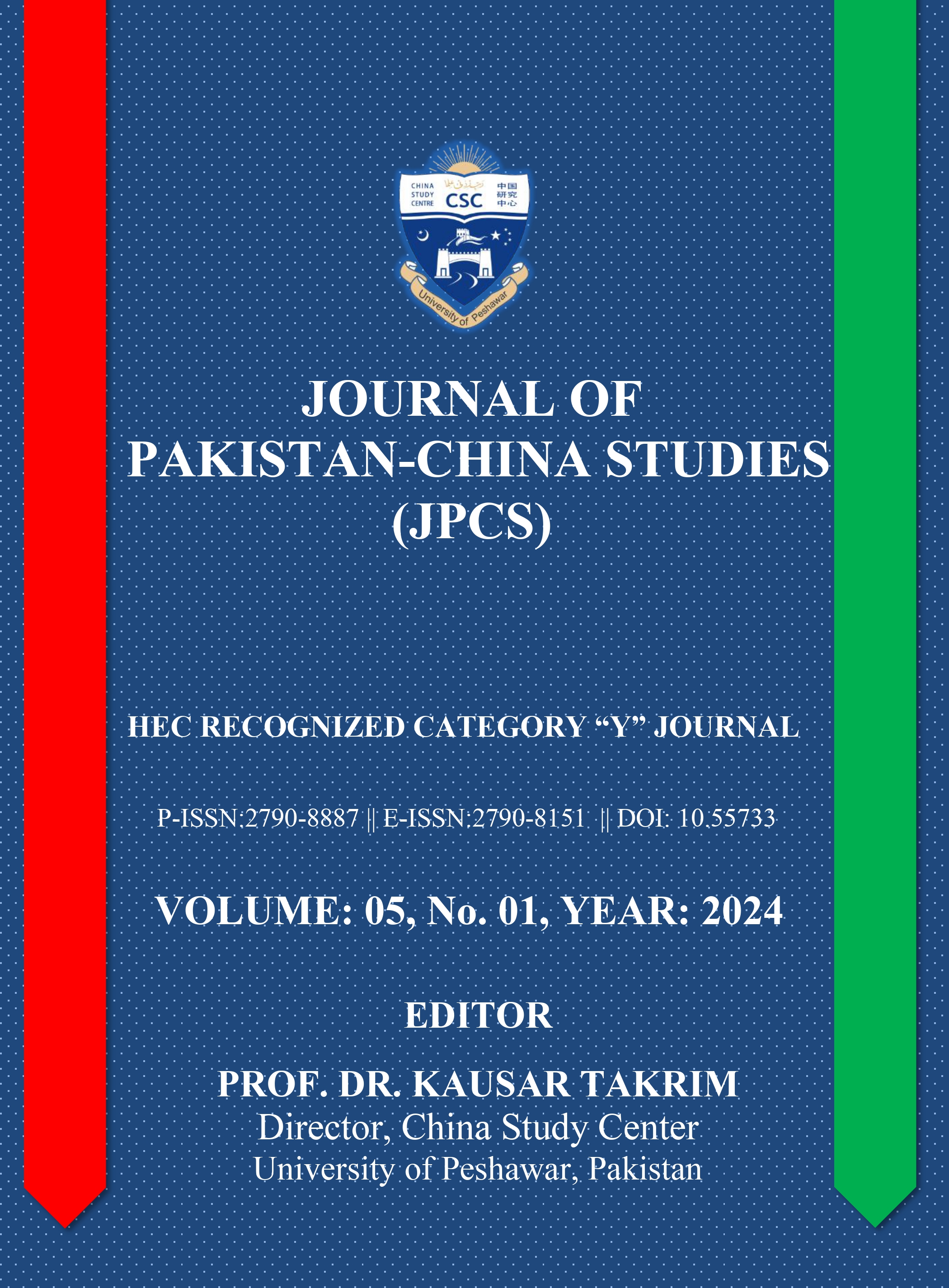THE IMPACT OF CPEC ON TRADE STRUCTURE AND REGIONAL COMPETITIVENESS OF PAKISTAN
DOI:
https://doi.org/10.55733/jpcs.v5i1.77Keywords:
CPEC, Revealed comparative advantage, Regional competitiveness, Trade, Industrial Growth.Abstract
Pakistan and China are common exporters of various goods and with CPEC the concerns about Pakistan’s export structure has risen. Along with its expected benefits, there exist a few threats as well. Threats to Pakistan include losing its exports significantly on account of gaining cost effectiveness by China and crowding out of domestic industries. This research has estimated revealed comparative advantage and growth trends of such common goods to evaluate the impact of CPEC on trade structure of Pakistan. It is found that Pakistan has a comparative advantage in all its major exports over China but the growth in these commodities exports is higher for China. It is also observed that Pakistan is less vulnerable in exports of rice, cotton and textile while is more vulnerable in exports of Knit wear, leather, foot wear, sport and woollen carpets & rugs. Once CPEC is operational, China’s cost of production would decline much sharply via time and cost saved by using CPEC route, Consequently Pakistan would possibly be not in position to compete in exports of these commodities. Eventually, Pakistan’s exports or even production of these industries would be crowded out especially if the situation remained unconsidered by the government
References
Sohail, S. (2022). Debt Sustainability and the China Pakistan Economic Corridor. South-South Integration and the SDGs: Enhancing Structural Transformation in Key Partner Countries of the Belt and Road Initiative. In Geneva: United Nations Conference on Trade and Development. https://unctad. org/system/files/informationdocument/BRI-Project_policy-brief-06_en. pdf.
Akhtar, N., Zakir, N., & Ghani, E. (2008). Changing revealed comparative advantage: a case study of footwear industry of Pakistan. The Pakistan Development Review, 695-709.
Akhtar, N., Khan, H. U., Jan, M. A., Pratt, C. B., & Jianfu, M. (2021). Exploring the determinants of the China-Pakistan economic corridor and its impact on local communities. SAGE Open, 11(4), 21582440211057127.
Balassa, B. (1965). Trade liberalization and revealed comparative advantage. Manchester School of Economic and Social Studies, 33, 99-123.
Balassa, B. (1977). Revealed comparative advantage revisited: An analysis of relative export shares of the industrial countries, 1953–1971. The Manchester School, 45(4), 327-344.
Banerjee, A., Duflo, E., & Qian, N. (2020). On the road: Access to transportation infrastructure and economic growth in China. Journal of Development Economics, 145, 102442.
Bano, S., & Scrimgeour, F. (2012). The export growth and revealed comparative advantage of the New Zealand kiwifruit industry. International Business Research, 5(2), 73-82.
Donaldson, D. (2018). Railroads of the Raj: Estimating the impact of transportation infrastructure. American Economic Review, 108(4-5), 899-934.
Hanif, M. N., & Jafri, S. K. (2008). Financial development and textile sector competitiveness: A case study of Pakistan. South Asia Economic Journal, 9(1), 141-158.
Naseem, A. (2015). Impact of China-Pakistan Economic Corridor: A bird’s eye view. BMA Capital. https://www.scribd.com/document/281995726/Economic-Corridor-a-Birds-Eye-View
Ahmad, N., & Kalim, R. (2013). Changing revealed comparative advantage of textile and clothing sector of Pakistan: Pre and post quota analysis. Pakistan Journal of Commerce and Social Sciences (PJCSS), 7(3), 520-544.
Richardson, J. D., & Zhang, C. (2001). Revealing comparative advantage: chaotic or coherent patterns across time and sector and US trading partner?. In Topics in Empirical International Economics: A Festschrift in Honor of Robert E. Lipsey (pp. 195-232). University of Chicago Press.
Shahab, S., & Mahmood, M. T. (2013). Comparative advantage of leather industry in Pakistan with selected Asian economies. International Journal of Economics and Financial Issues, 3(1), 133-139.
Sayed, M. H. (2019). The China—Pakistan economic corridor: A case study. IDS Bulletin, 50(4), 1968-2019.
United Nations ComTrade Database. https://comtradeplus.un.org/TradeFlow
World Bank. World development indicators. Retrieved from https://data.worldbank.org/indicator
Yu, R., Cai, J., & Leung, P. (2009). The normalized revealed comparative advantage index. The annals of regional Science, 43, 267-282.
JPCS, Vol.5, Issue 1, 2024 Munazah Nazeer, Uzma Tabassum & Humera Sultana.
Yue, C. (2001). Comparative advantage, exchange rate and exports in China. In international conference on Chinese economy, CERDI, France.
Additional Files
Published
How to Cite
Issue
Section
License
Copyright (c) 2024 Journal of Pakistan-China Studies (JPCS)

This work is licensed under a Creative Commons Attribution-NonCommercial 4.0 International License.
![]()




